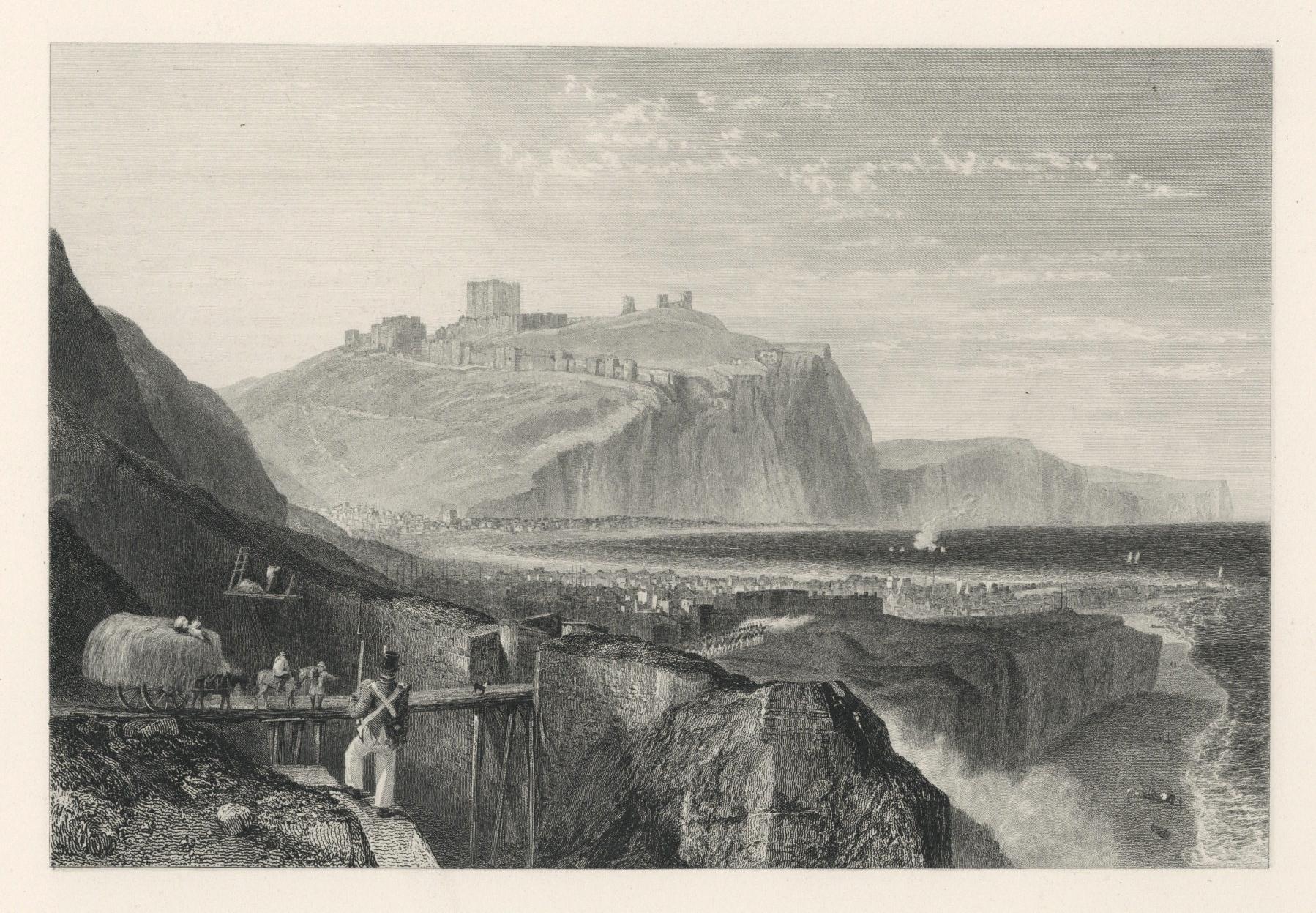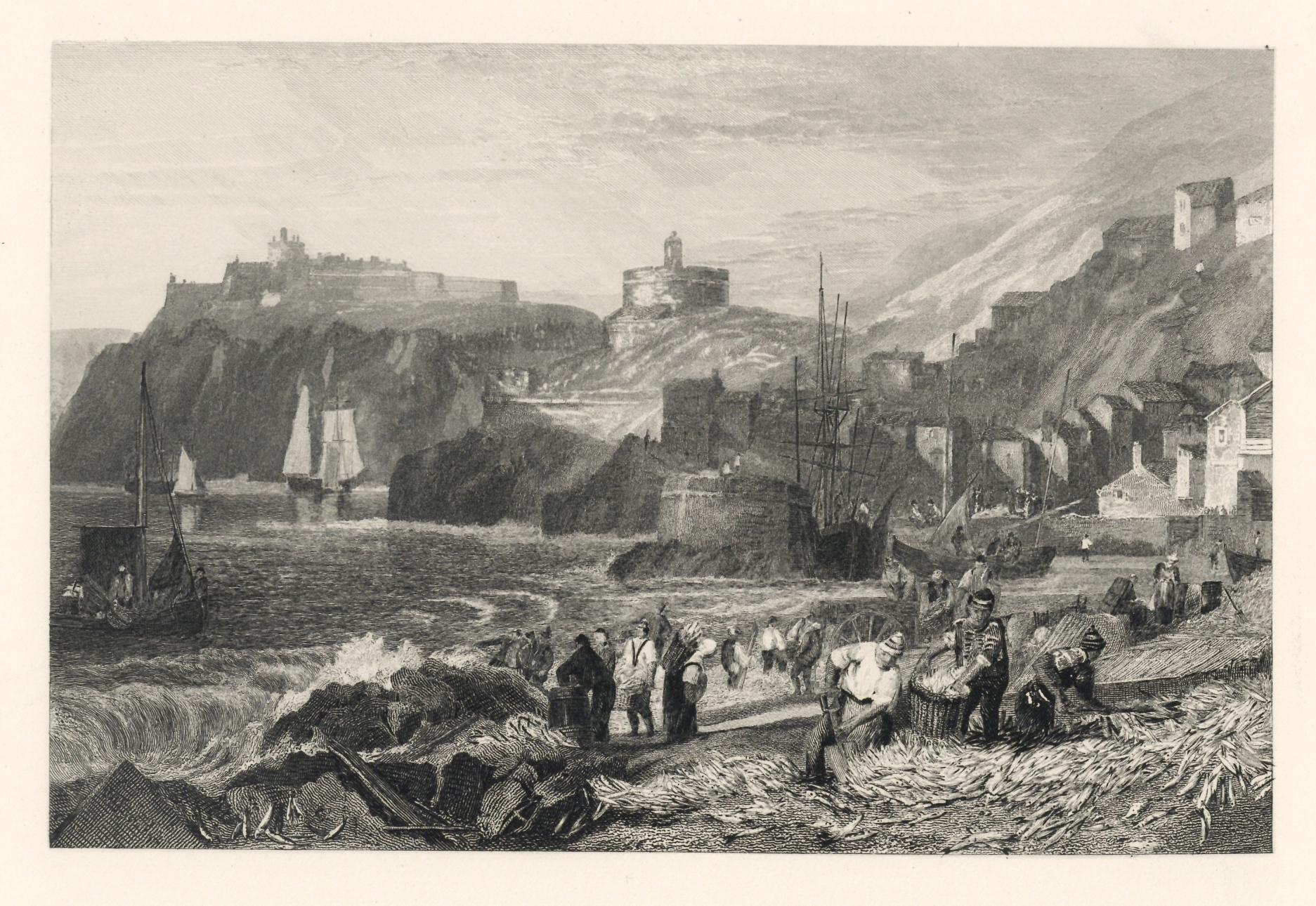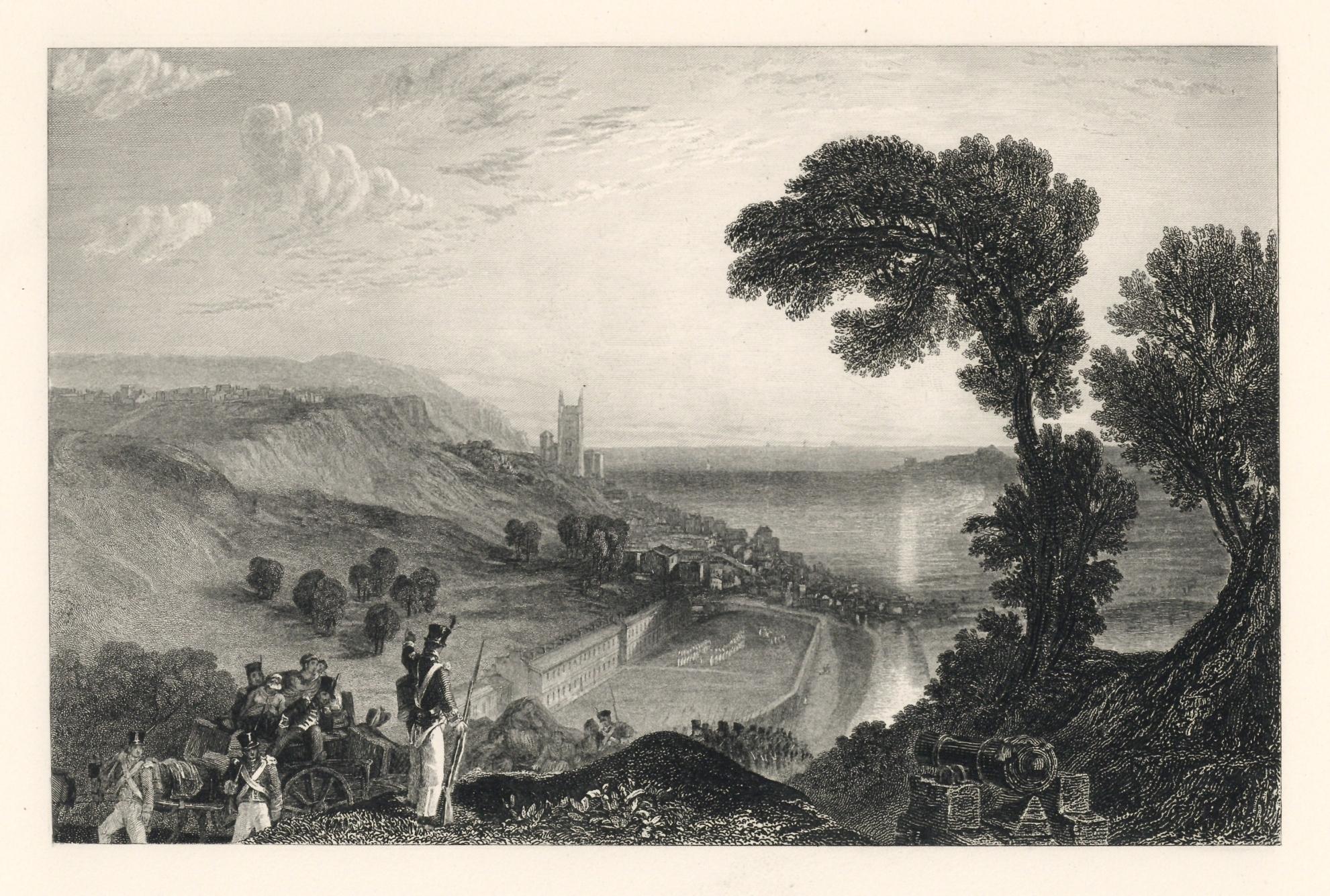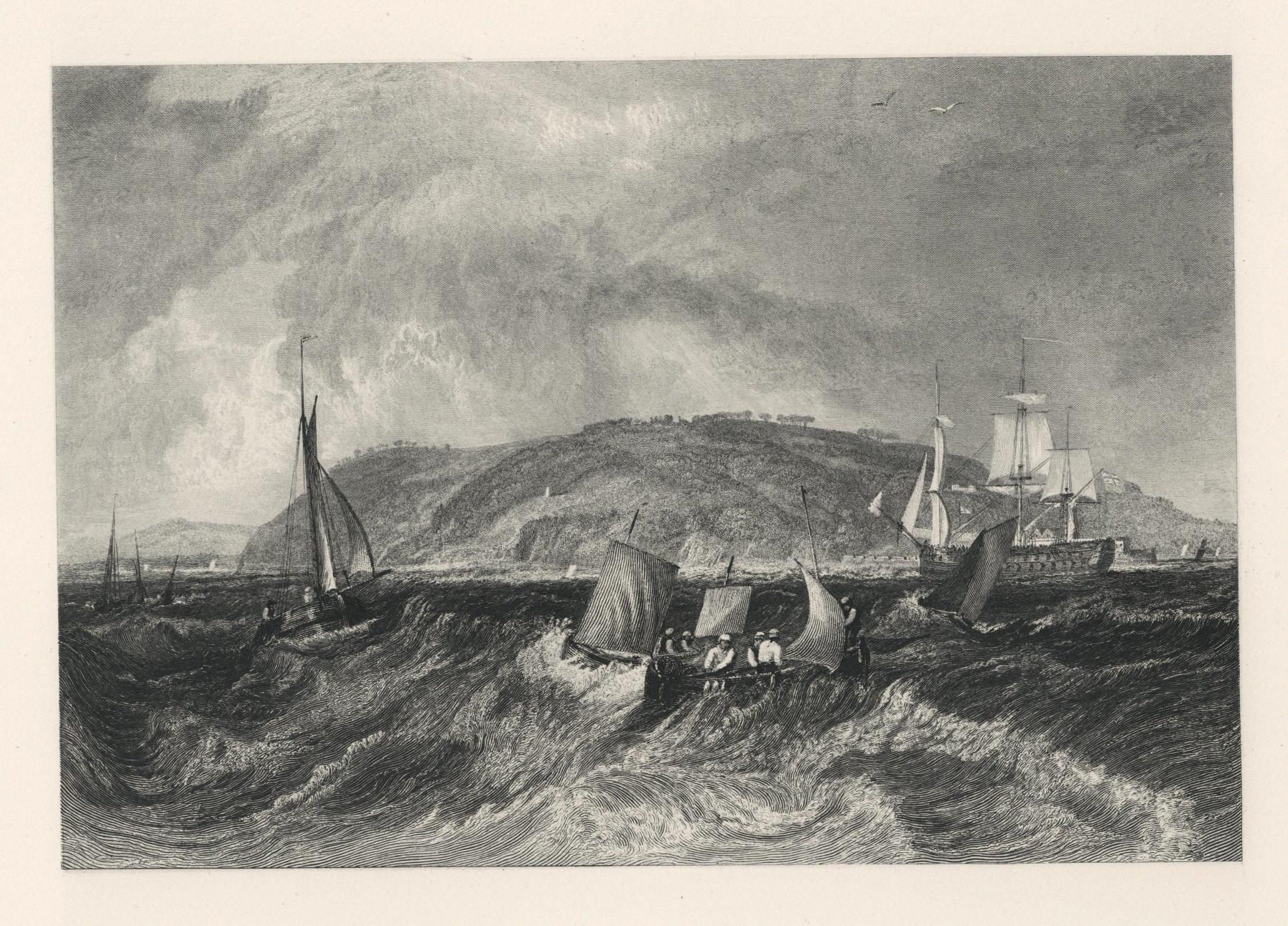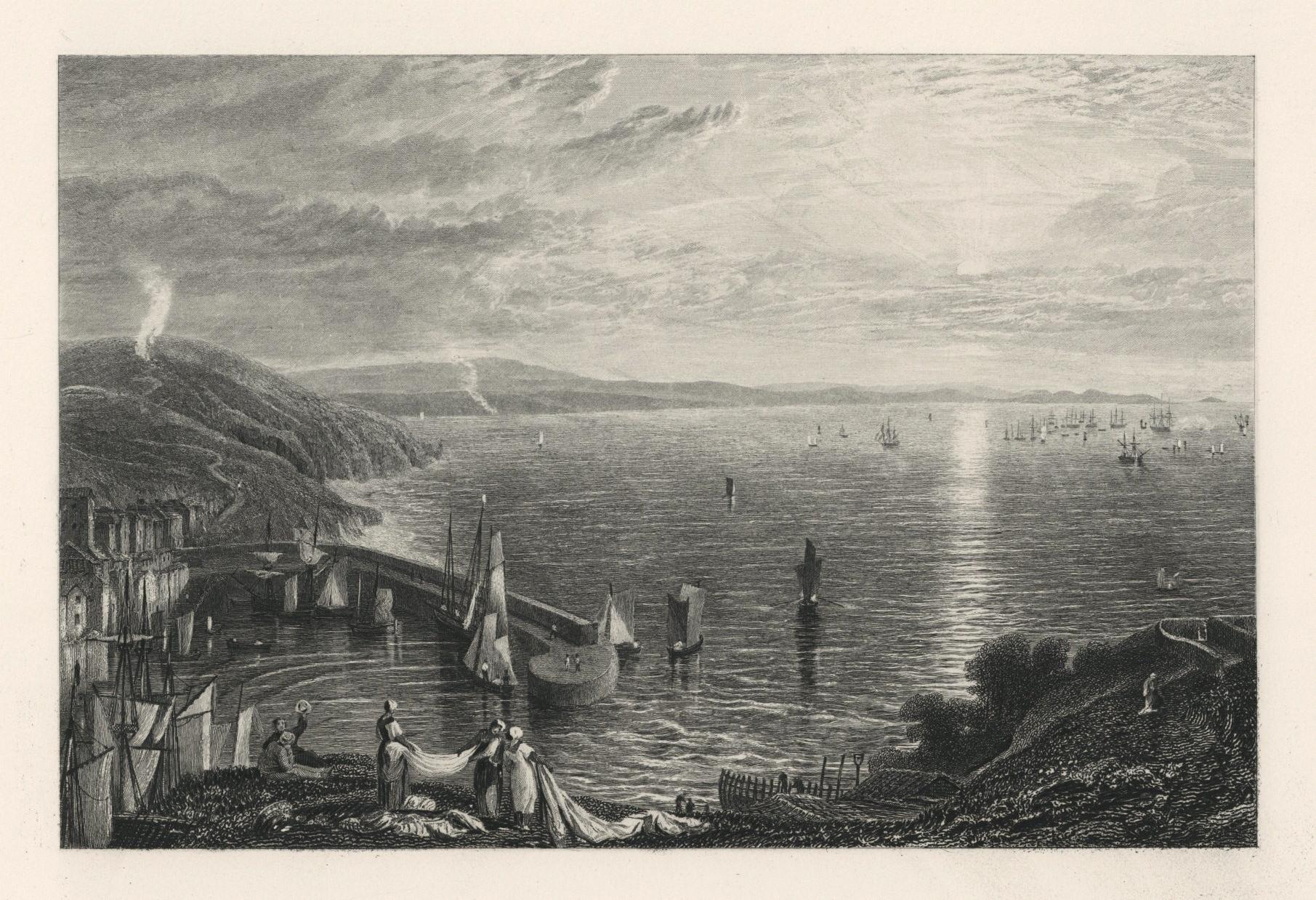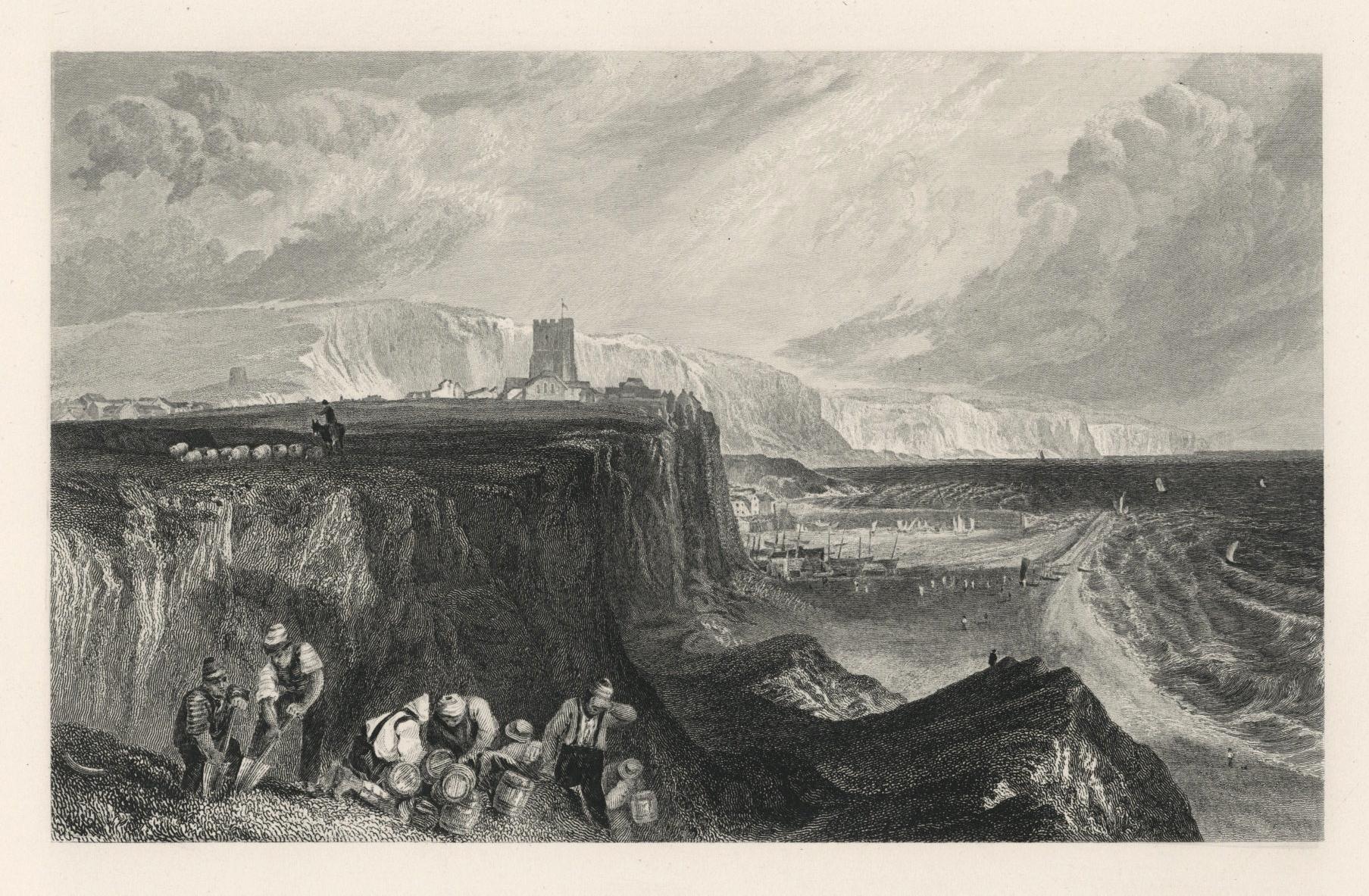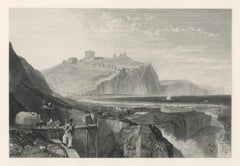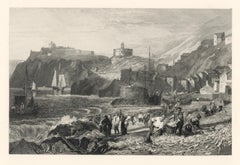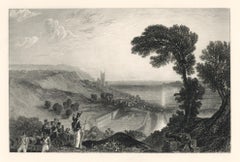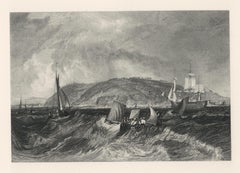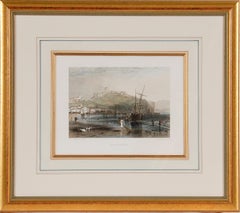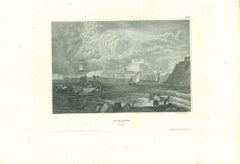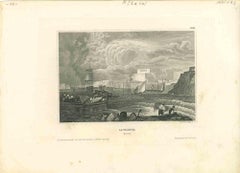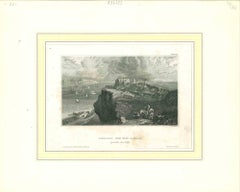Items Similar to "Plymouth" engraving
Want more images or videos?
Request additional images or videos from the seller
1 of 2
(After) Joseph Mallord William Turner"Plymouth" engravingCirca 1820
Circa 1820
$200
£151.93
€174.95
CA$286.12
A$313.85
CHF 161.84
MX$3,748.58
NOK 2,052.61
SEK 1,925.58
DKK 1,307.40
About the Item
Medium: engraving (after the painting). Printed on Holland-style wove paper, from the rare large size deluxe portfolio entitled "Picturesque Views on the Southern Coast of England", published in parts between 1814-1826 by John and Arthur Arch. Image size: 6 1/2 x 9 1/2 inches. Sheet size: 13 x 17 1/2 inches (325 x 447 mm) with full original margins. There is a platemark surrounding the image (not shown in this photo). Not signed.
- Creator:(After) Joseph Mallord William Turner (British)
- Creation Year:Circa 1820
- Dimensions:Height: 6.5 in (16.51 cm)Width: 9.5 in (24.13 cm)
- Medium:
- Period:
- Condition:Full original margins.
- Gallery Location:Henderson, NV
- Reference Number:1stDibs: LU2365215746352
About the Seller
5.0
Platinum Seller
Premium sellers with a 4.7+ rating and 24-hour response times
Established in 2006
1stDibs seller since 2023
550 sales on 1stDibs
Typical response time: 1 hour
- ShippingRetrieving quote...Shipping from: Henderson, NV
- Return Policy
Authenticity Guarantee
In the unlikely event there’s an issue with an item’s authenticity, contact us within 1 year for a full refund. DetailsMoney-Back Guarantee
If your item is not as described, is damaged in transit, or does not arrive, contact us within 7 days for a full refund. Details24-Hour Cancellation
You have a 24-hour grace period in which to reconsider your purchase, with no questions asked.Vetted Professional Sellers
Our world-class sellers must adhere to strict standards for service and quality, maintaining the integrity of our listings.Price-Match Guarantee
If you find that a seller listed the same item for a lower price elsewhere, we’ll match it.Trusted Global Delivery
Our best-in-class carrier network provides specialized shipping options worldwide, including custom delivery.More From This Seller
View All"Dover" engraving
By (After) Joseph Mallord William Turner
Located in Henderson, NV
Medium: engraving (after the painting). Printed on Holland-style wove paper, from the rare large size deluxe portfolio entitled "Picturesque Views on the Southern Coast of England", ...
Category
Early 19th Century Prints and Multiples
Materials
Engraving
"St. Mawes, Cornwall" engraving
By (After) Joseph Mallord William Turner
Located in Henderson, NV
Medium: engraving (after the painting). Printed on Holland-style wove paper, from the rare large size deluxe portfolio entitled "Picturesque Views on the Southern Coast of England", ...
Category
Early 19th Century Prints and Multiples
Materials
Engraving
"Hythe" engraving
By (After) Joseph Mallord William Turner
Located in Henderson, NV
Medium: engraving (after the painting). Printed on Holland-style wove paper, from the rare large size deluxe portfolio entitled "Picturesque Views on the Southern Coast of England", ...
Category
Early 19th Century Prints and Multiples
Materials
Engraving
"Mount Edgcumbe" engraving
By (After) Joseph Mallord William Turner
Located in Henderson, NV
Medium: engraving (after the painting). Printed on Holland-style wove paper, from the rare large size deluxe portfolio entitled "Picturesque Views on the Southern Coast of England", ...
Category
Early 19th Century Prints and Multiples
Materials
Engraving
"Torbay from Brixham Quay" engraving
By (After) Joseph Mallord William Turner
Located in Henderson, NV
Medium: engraving (after the painting). Printed on Holland-style wove paper, from the rare large size deluxe portfolio entitled "Picturesque Views on the Southern Coast of England", ...
Category
Early 19th Century Prints and Multiples
Materials
Engraving
"Folkestone" engraving
By (After) Joseph Mallord William Turner
Located in Henderson, NV
Medium: engraving (after the painting). Printed on Holland-style wove paper, from the rare large size deluxe portfolio entitled "Picturesque Views on the Southern Coast of England", ...
Category
Early 19th Century Prints and Multiples
Materials
Engraving
You May Also Like
A View of Scarborough, England: A Framed 19th C. Engraving After J. M. W. Turner
By J.M.W. Turner
Located in Alamo, CA
This beautiful 19th century framed engraving "Scarborough" by W. Chapman is based on an original painting by the renowned British artist J.M.W. Turner. It was published in London by ...
Category
Mid-19th Century Romantic Landscape Prints
Materials
Engraving
Ancient View of La Valetta - Original Lithograph - Early-19th Century
Located in Roma, IT
La Valetta is an original modern artwork realized in Italy in the first half of the 19th Century.
Original Lithograph on Ivory Paper.
Inscripted in capital letters on the lower ma...
Category
1850s Modern Figurative Prints
Materials
Lithograph
Ancient View of La Valetta - Original Lithograph - Early-19th Century
Located in Roma, IT
La Valetta is an original modern artwork realized in Italy in the first half of the 19th Century.
Original Lithograph on Ivory Paper.
Inscripted in capital letters on the lower ma...
Category
1850s Modern Figurative Prints
Materials
Lithograph
Ancient View of Lisbon - Original Lithograph - Mid-19th Century
Located in Roma, IT
Ancient View of Lisbon is an original modern artwork realized in the mid-19th Century.
Original B/W Lithograph on Ivory Paper.
Inscripted on the lower margin in Capital Letters: ...
Category
Mid-19th Century Modern Landscape Prints
Materials
Lithograph
Ancient View of Lisbon - Lithograph - Mid-19th Century
Located in Roma, IT
Ancient View of Lisbon is an original modern artwork realized in the first half of the 19th Century.
Original B/W Lithograph on Ivory Paper.
Inscripted on the lower margin in Capital Letters: Lissabon von Port Almeida jenseits des Tajo.
Good conditions. Yellowing Sheet.
Passepartout is included: 24 x 30 cm.
Lissabon is an excellent Modern Artwork; a delicate Lithograph depicting a beautiful view on a Typical Portuguese Landscape.
Category
Mid-20th Century Modern Figurative Prints
Materials
Paper, Lithograph
Laurie and Whittle - 1794 Engraving, A General View of the City of Lisbon
Located in Corsham, GB
A vibrant and captivating print depicting an expansive view of Lisbon, with ships sailing in the foreground. Inscribed within the plate below the image. On paper.
Category
Early 18th Century Landscape Prints
Materials
Engraving
More Ways To Browse
Fort India
Framed Vintage Floral Prints
Henri Matisse Original Print
Jazz Festival Prints
John Lennon Love And Peace Drawing
Mercedes 300
Michele Cascella
Mma Metropolitan Museum Of Art
Peter Max Sailboat
Petra Antique
Protest Poster
Radcliffe Camera
Salvador Dali The Twelve Apostles
Salvador Dali Woman
Signed Mr Brainwash
Tintin Art
Tokyo Poster
Vintage Apple Poster
